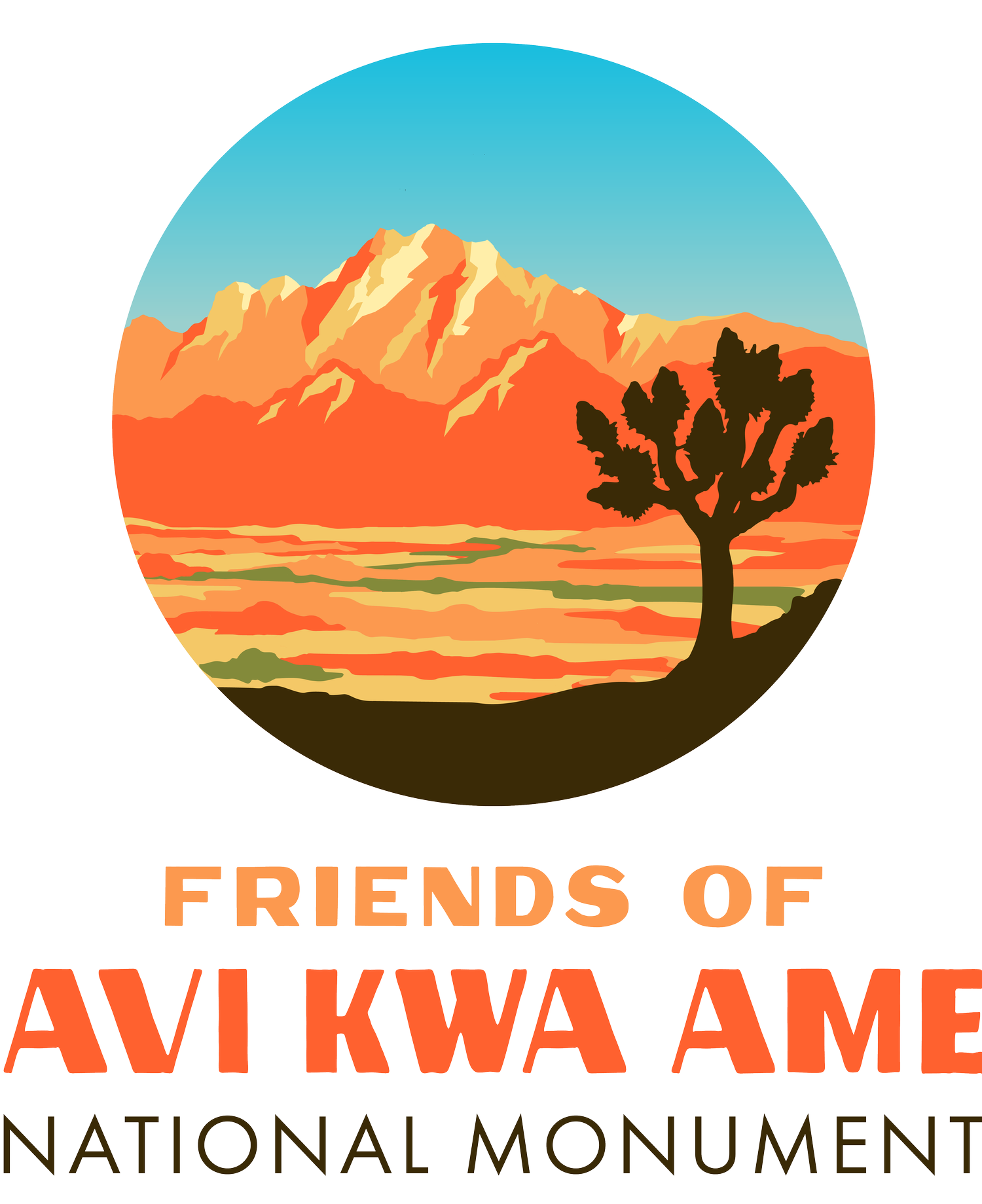HIKING TRAIL:
HIKO SPRINGS CANYON
Type: Out and back
Trail End Point: 1.8 miles one-way from parking
Trail Surfaces: Loose gravel, sand, rock
Difficulty: Easy to moderate
Restrooms: None available
Parking Type: Large gravel parking lot
Vehicle Access to Parking: All-types
Dogs: Allowed on Leash
Guides: No trail markers
Accessibility: Not wheelchair accessible
Activities: Walking, rock scramblling, bird watching
OVERVIEW
The Hiko Spring Canyon Trail goes through a scenic spring-fed desert canyon, tucked into the foothills of the Newberry Mountains, not far from Avi Kwa Ame (Spirit Mountain), the place of creation for the Mojave Indian Tribe and the other 9 Yuman speaking tribes. As such, it has profound spiritual significance and you will have the opportunity to see numerous petroglyphs, both at the trailhead and further down the canyon. Those interested in geology will find the hike fascinating with all the colorful rock formations.
The coordinates near where to pull off the 163 are 35.16851° N, 114.68712° W, and you can find the google maps pin link here.




ABOUT THE ROUTE:
The trailhead is at the entrance to the head of the canyon where Hiko Spring, a natural spring, is located. The 3.4 mile trail starts at the head of the canyon and is an easy down and back hike (1.7 miles each way) on a mostly sandy/gravelly wash bottom and over some smooth water polished granite rocks as a result of past flash flood events. It is mostly flat with an elevation change of only 430 feet. The hike is best done in fall, winter and spring. The summer temperatures are generally too hot, unless it is done in the very early morning. The hike is particularly beautiful in the spring with all the flowering yellow brittlebush adorning the canyon walls and hillsides and other wildflowers and flowering cactus.
The wash bottom has some occasional mesquite and catclaw acacia trees and a few desert willows. These and other wash vegetation are deep-rooted in order to reach the underlying water aquifers. There are pockets of arrowweed, cheesebush, saltbush, coyote melon, and some areas with more lush vegetation associated with the natural springs or seeps or where water may be closer to the surface. Adjacent to the wash, the steep hillsides are covered with brittlebush and more common Mojave desert species. There are a large number of barrel cacti on the hillsides as well as a variety of cholla other cactus species.
As you hike the canyon, watch for Red-tailed hawks, Golden Eagles, Northern Mockingbirds, Gambel’s Quail, Ash-throated Flycatchers, American Goldfinches and Cactus Wren to name just a few. This area, along with nearby Grapevine Canyon and Sacatone Canyon have been designated by Audubon as an Important Bird Area.
Although the natural history of the canyon is fascinating, the cultural significance of the area is of equal important. The entire canyon is part of a sacred landscape. A concentration of petroglyphs are located at several points along the trail. The first set of petroglyphs is found right at the trailhead, on the left side of the dense spring vegetation and on up the hillside. There are also historic images carved by European settlers at this trailhead site. The largest set of petroglyph panels is found about 1.5 miles down the trail towards the end of the formal trail. They are on the south side of the trail on the cliff faces.
Most people turn around when the canyon narrows at around 1.7 miles, just past the main canyon petroglyph panels. That is the official end of the trail. You will know when you get to this point because there is a steep drop from the canyon wash to a jumble of water scoured rock resembling a rock waterfall and the canyon narrows significantly.
VISITING WITH RESPECT:
While visiting, please respect the traditions of the people who still consider this canyon to be sacred to their lives and culture. Do not deface the petroglyphs. Even touching them can cause damage. Archeological artifacts and sites are protected in the Avi Kwa Ame National Monument. It is illegal to remove or damage archeological materials. Disturbance of these resources destroys our heritage. Please do not climb on the rocks and panels. Look, observe, imagine. Be still and listen. Let the rocks speak.
KNOW BEFORE YOU GO:
Be sure to take plenty of drinking water. Staying hydrated on your hike is of utmost importance There is none available along the trail. In the hot summer months, temperatures often exceed 100 degrees or higher. On a hot day, you should be drinking 1 quart of water per hour of hiking. When half of your water is gone when hiking, turn around and head back. Since the trail is in a desert wash, you need to be aware of the potential for flash flooding, particularly connected with intense thunderstorms during the monsoon season which is normally in July and August. Obviously, dark skies and the sound of distant thunder are warning signs, but floods can develop many miles away and may not be evident downstream. Hiko Spring Canyon has a large upstream drainage basin.
DIRECTIONS AND PARKING:
From Las Vegas, you head south on I-11 (U.S. 95 south) towards Boulder City.
At the junction of I-11 and U.S.95, turn south on U.S 95 toward Searchlight and Laughlin.
Turn left on Nevada Highway 163 (Laughlin Hwy) and drive 10 miles to where the road makes a sharp bend to the left. Be on the lookout for the bend as the turnoff is just before the bend starts where there is a dirt road that takes off to the right. Turn right on that road and then take a left and the road ends in a quarter mile at the trailhead.
Google maps pin to offramp area here.











